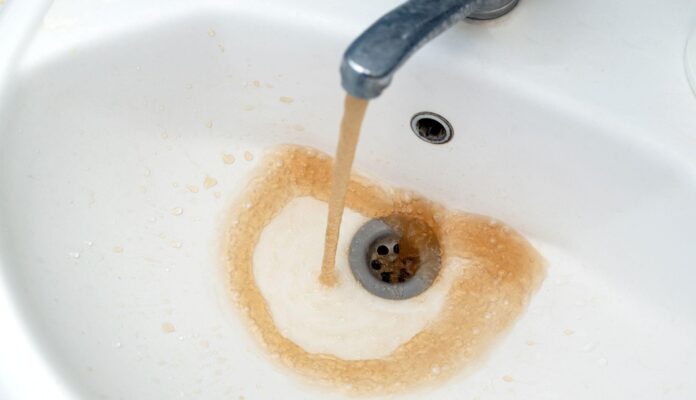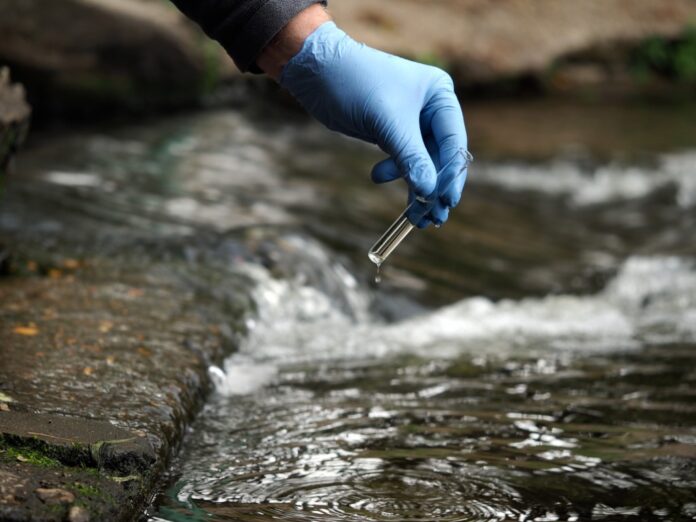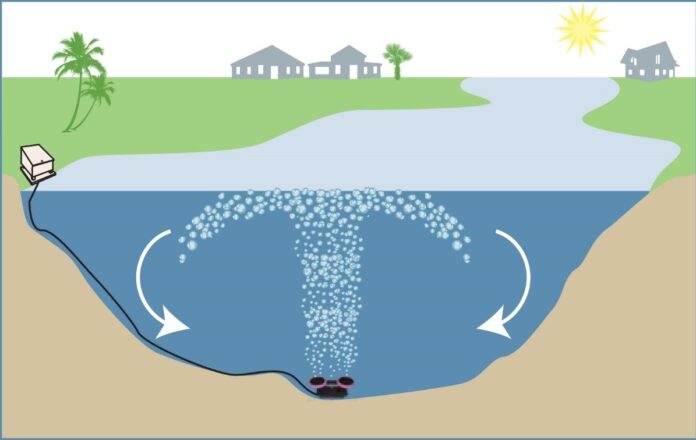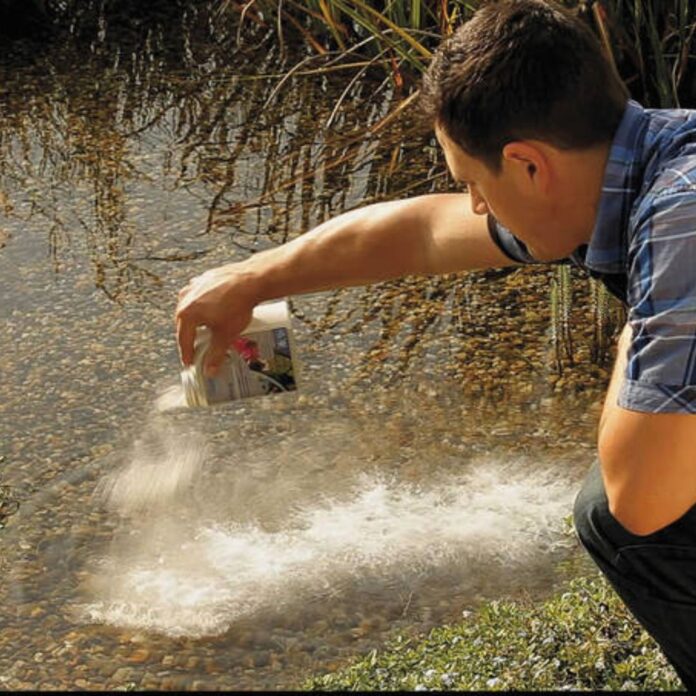Water clarity affects more than just aesthetics. Clear water is essential for environmental health, public safety, and functional use in both natural ecosystems and residential settings. Lakes and ponds rely on clear water to support aquatic life, while households need clarity for clean drinking, bathing, and cooking.
Natural bodies of water like lakes and ponds experience clarity issues due to erosion, algae, and decaying matter. In contrast, tap water in homes can become cloudy due to dissolved minerals, air bubbles, or chemical additives. Murkiness can originate from suspended solids, biological waste, or even plumbing factors.
Several causes work together to reduce clarity, each needing tailored solutions. Whether you’re maintaining a private pond or troubleshooting cloudy water at the tap, recognizing the source helps guide the right fix.
Causes of Murky or Cloudy Water

Water clarity problems stem from a variety of causes. These range from environmental issues in outdoor water bodies to chemical and physical irregularities in residential systems.
Each source introduces its own type of visual disruption, and some bring additional concerns related to health or system damage.
Environmental and Natural Causes (Lakes and Ponds)
Natural bodies of water respond to seasonal changes, weather patterns, and ecological imbalances. The following environmental issues often contribute to murkiness:
Erosion and Sediment Runoff
Erosion plays a major role in introducing solid material into lakes and ponds.
Soil loss occurs when rainwater or waves disrupt unprotected shorelines, especially where vegetation has been removed. Once sediment enters the water, fine particles float near the surface and reduce visibility.
In addition to affecting aesthetics, sediment often brings along nutrients that feed algae growth.
Key effects of erosion include:
- Soil particles suspended in the water
- Brown or muddy appearance
- Increased nutrient loads that stimulate algae blooms
- Smothering of aquatic vegetation and habitat
Organic Muck Accumulation

Dead plant matter, fallen leaves, and nutrients from fertilizers accumulate at the bottom of water bodies over time.
In stagnant or low-oxygen conditions, this material decomposes slowly and turns into dense muck.
The result is a thick, black sludge that promotes further oxygen depletion and may harbor harmful bacteria.
Consequences of muck buildup:
- Reduced oxygen levels that endanger aquatic life
- Increased water turbidity near the bottom
- Foul odors during decomposition
- Recirculation of nutrients back into the water column
Planktonic Algae Blooms

Algae are natural parts of aquatic ecosystems, but under the right conditions, they grow explosively and cause discoloration.
Planktonic algae remain suspended in the water column, often turning water green, blue, or reddish.
These blooms flourish in response to high nutrient concentrations, sunlight, and warm temperatures.
Algae bloom symptoms include:
- Visible surface scum or colored water
- Poor light penetration affecting submerged plants
- Sudden pH shifts and oxygen crashes at night
- Potential for toxic species that harm fish or pets
Invasive Species Activity
Certain fish and invertebrates disturb the waterbed while feeding or burrowing.
Armored catfish, for example, dig through soft sediment and stir up materials that would otherwise remain settled.
The constant disruption not only clouds the water but also makes nutrients available to algae.
Impacts of invasive species behavior:
- Increased resuspension of organic matter
- Elevated turbidity levels
- Decline of native plant and animal populations
- Rapid spread of unwanted organisms
Household Tap Water Causes

Residential water systems can also experience clarity problems. These are usually traced to physical particles, dissolved chemicals, or gas entrapment.
Below is an overview of common culprits affecting household tap water:
Turbidity (Suspended Particles)
Turbidity occurs when solid particles such as silt, sand, or clay remain suspended in water. They often come from well disturbances or contamination of the water source after a storm.
While not always harmful, these particles affect water appearance and may indicate system vulnerabilities.
Common sources of turbidity:
- Surface water runoff after rain
- Broken water mains or pipe corrosion
- Construction activity near wells
- Loose sediment in plumbing
Total Dissolved Solids (TDS) and Minerals

Minerals like calcium and magnesium are naturally present in groundwater. When concentrations rise, they form scale and cause hazy or chalky water.
Iron is another common mineral that gives water an orange tint and metallic taste. High TDS levels are typically detected by lab tests or reverse osmosis system readings.
Indicators of high TDS and mineral content:
- White or gray film on glassware and fixtures
- Clogged pipes and reduced water heater efficiency
- Metallic or bitter water flavor
- Visible residue after boiling
Air Bubbles / Gases
Sometimes water appears milky due to air trapped during delivery.
Changes in pressure or temperature, or the presence of aerators in faucets, allow microscopic air bubbles to form. These clear out naturally after the water sits undisturbed.
Signs of air-related cloudiness:
- Cloudy water that clears from bottom to top
- No discoloration or residue
- No taste or odor change
- Water clears within minutes in a standing glass
Iron and Tannins

Iron in water leaves reddish stains in sinks and bathtubs and may leave clothing discolored after laundry.
Tannins come from decaying plant material and are more common in wells near forests or swamps. They give water a yellow or tea-colored tint and astringent taste.
Symptoms of iron and tannin presence:
- Orange, brown, or yellow discoloration
- Metallic or bitter taste
- Stains on porcelain, fabric, and appliances
- Yellow water that does not clear with settling
Chlorine or Chemical Additives
Municipal treatment facilities often add chlorine or chloramine for disinfection. While effective at killing bacteria, high doses can lead to cloudiness, sharp odors, and skin or eye irritation.
These compounds may react with organic materials to form by-products with unpleasant side effects.
Signs of excessive chemical presence:
- Bleach-like odor at the tap
- Cloudiness after aeration systems engage
- Dry skin or eye redness after bathing
- Unpleasant taste in drinking water
Diagnosing the Problem

Simple tests can help identify why water appears murky. Start by filling a glass and observing it. If the cloudiness clears within a few minutes, air bubbles are likely the cause.
If particles settle to the bottom, suspended solids are probably responsible. If the discoloration remains unchanged, dissolved minerals or other persistent contaminants could be involved.
Further testing offers a clearer diagnosis. Home kits or professional lab tests can measure turbidity using NTU (Nephelometric Turbidity Units), identify TDS levels, and detect contaminants like iron or bacteria.
For lakes and ponds, bathymetric studies provide data on depth and sediment buildup, helping pinpoint problem zones and guide restoration plans.
Without testing, treatment risks being ineffective or unnecessarily expensive. Proper diagnosis ensures that the solution matches the specific cause, whether environmental, mechanical, or chemical.
Solutions and Restoration Methods
Restoring water clarity requires targeted intervention based on the source and severity of the problem.
Natural water bodies such as lakes and ponds need different approaches compared to household tap water systems.
Lake restoration solutions often combine aeration, shoreline stabilization, hydro-raking, and nutrient treatments to restore ecological balance and long-term clarity.
The right solution often involves a combination of technologies and preventive strategies tailored to specific conditions.
Below are the most effective restoration options for both environments, with key points highlighted in bullet format for clarity.
Aeration Systems

Aeration improves oxygen levels throughout the water column, which helps reduce organic buildup and discourages algal growth.
Circulation breaks surface tension, disperses nutrients, and supports aerobic bacterial activity that decomposes organic material more effectively.
Key benefits of aeration systems:
- Increases oxygen availability for aquatic life
- Supports decomposition of organic debris
- Reduces surface scum and odor
- Prevents thermal stratification in deeper ponds
- Minimizes algae bloom conditions
Recent advances like Oxygen Saturation Technology (OST) deliver oxygen deeper into water with greater energy efficiency, making it an ideal choice for larger or deeper lakes.
Shoreline Stabilization

Eroding shorelines contribute large volumes of sediment and nutrients to water bodies, triggering cloudiness and algae blooms.
Stabilization involves using natural vegetation or structural barriers to control runoff and hold soil in place.
Effective shoreline stabilization practices include:
- Planting native grasses, shrubs, and trees along the edge
- Using coconut fiber rolls or erosion-control mats
- Installing SOX mesh or stone barriers in high-erosion zones
- Creating natural buffer zones to filter runoff
- Avoiding mowing or clearing right up to the shoreline
Healthy shoreline buffers prevent sediment and nutrient inflow and create habitats for beneficial aquatic species.
Hydro-Raking

Hydro-raking offers a mechanical solution to excess organic buildup on the bottom of ponds or lakes. It removes decayed matter, plant debris, and sediment that reduce water depth and clarity.
Advantages of hydro-raking:
- Removes thick layers of muck without draining the waterbody
- Restores usable depth for recreation and fish habitat
- Improves water circulation and light penetration
- Ideal for targeted areas like swim zones, docks, or coves
- Less disruptive than full-scale dredging
Hydro-raking is often used seasonally to maintain clarity and prevent recurring problems.
Nutrient Binding Treatments
High phosphorus levels trigger algae blooms. Nutrient binding agents neutralize excess phosphorus, cutting off the food supply that drives harmful growth.
Treatments like Phoslock and Alum chemically bind with free-floating nutrients, rendering them unavailable to algae.
Expected outcomes with nutrient binding agents:
- Immediate reduction in available phosphorus
- Improved water clarity within days to weeks
- Less frequent and less severe algae blooms
- Restoration of aquatic plant balance
- Long-term stability when paired with aeration
Applications must be carefully calculated based on water volume and sediment load to avoid over-treatment or ecological imbalance.
Algaecides (When Necessary)

Algaecides provide short-term relief from nuisance or harmful algae blooms. While not a long-term fix, they serve as a rapid response measure to restore usability or prevent oxygen crashes caused by decaying blooms.
Situations where algaecides may be appropriate:
- Acute blooms posing health or safety risks
- Visible scums or odors in recreational areas
- When aeration or nutrient controls are not yet installed
- Emergency treatment for fish kill prevention
Algaecides should be used sparingly and under guidance to avoid collateral damage to beneficial organisms or water chemistry.
Preventive Measures
Maintaining water clarity begins with preventive action. In natural water bodies, consistent shoreline care, vegetation maintenance, and erosion control prevent sediment and nutrient runoff.
Regular inspection of inflows and storm drains helps block fertilizer or animal waste contamination before it reaches the water.
Fertilizer use near lakes and ponds should be minimized or replaced with slow-release, phosphorus-free alternatives. Property owners are encouraged to avoid mowing to the edge of a shoreline, leaving buffer strips instead.
For residential systems, clean filters according to the manufacturer’s instructions and replace them as recommended. Wells should be inspected annually to check for casing cracks, bacterial contamination, or sediment infiltration.
Roof runoff and yard drainage should be directed away from wellheads to prevent surface contaminants from entering groundwater.
By staying proactive, property owners can avoid many clarity problems altogether and reduce the need for costly treatments or emergency repairs.
The Bottom Line
Murky or cloudy water, while not always dangerous, usually points to underlying problems in the environment or delivery system. Recognizing the cause is the first step to restoring clarity.
Natural ponds and lakes require targeted strategies, including aeration, muck removal, and erosion prevention.
Household systems benefit from filtration and testing. In both cases, professional evaluation ensures solutions are safe and effective.







